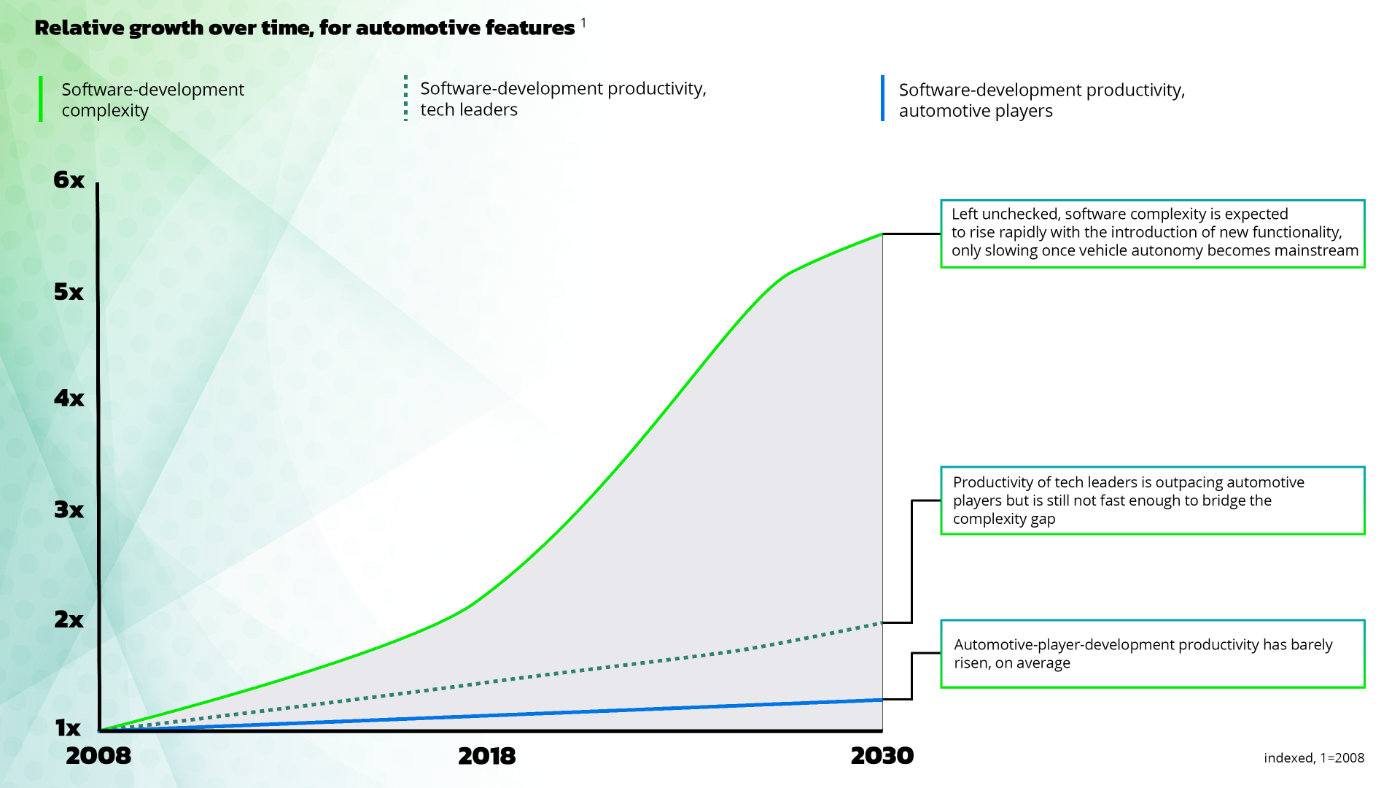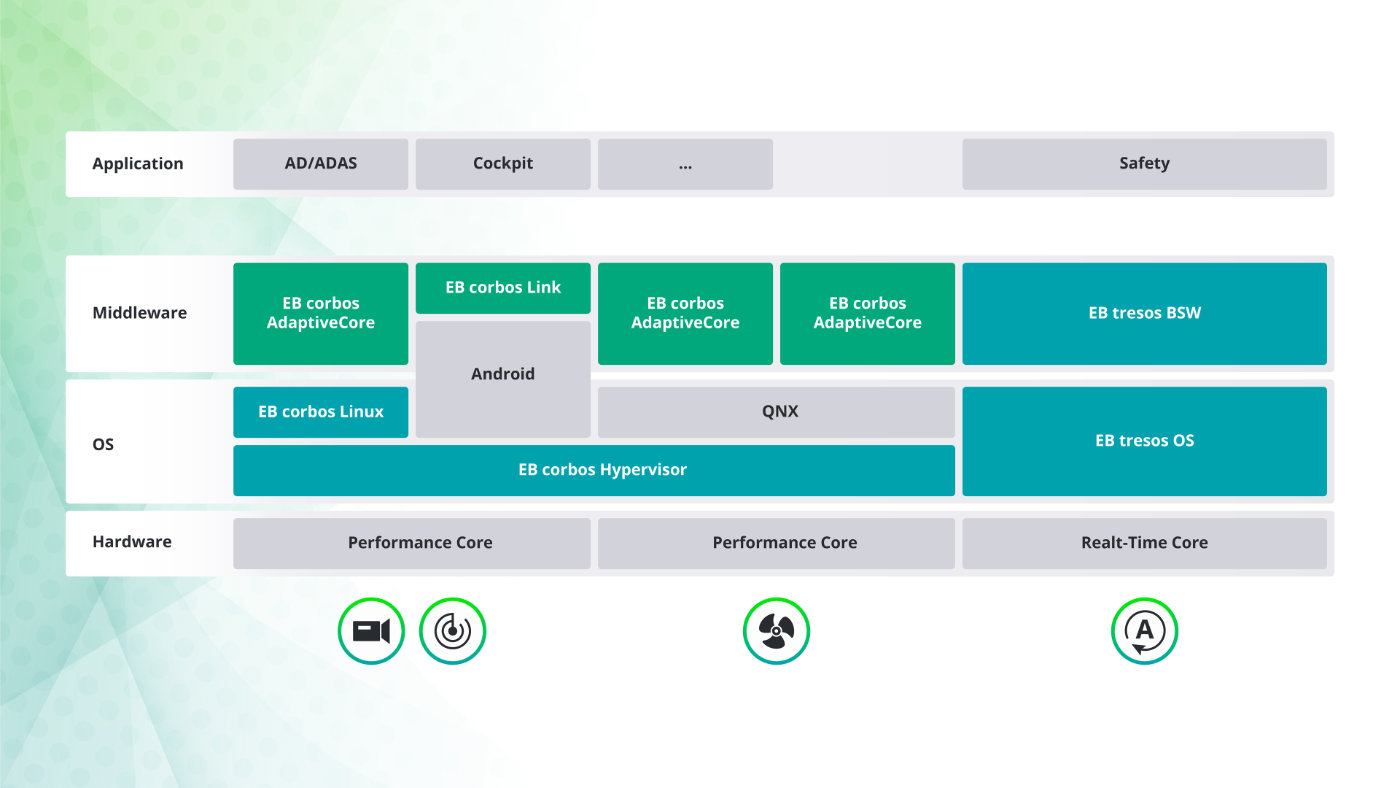
The disruptive transformation currently impacting the automotive industry will shape the generations of future vehicles. Innovation is accelerating, and automakers are racing to deliver connected, software-defined experiences, from smart infotainment and advanced driver assistance (ADAS) to seamless over-the-air (OTA) updates and electrification.
Behind the scenes of a software-defined vehicle (SDV), middleware plays a crucial role in managing this increasing complexity of delivering these new experiences, and keeping all systems working in sync.
To ensure a smooth transition into SDVs, and help maintain this transformation, a robust, secure, and safe middleware solution has become essential.
Understanding the role of middleware in modern vehicles
SDVs require a communication platform that facilitates the exchange of information between the various (software) functionalities of the vehicle. Traditionally, every aspect of a vehicle, from its use cases and functions to the ECUs and overall architecture, remained fixed and unchangeable.
Today, that model is shifting. Vehicle functions are no longer static; they are evolving and increasingly configurable to meet changing demands (Image 1).
To accommodate this dynamic landscape, middleware is key to decoupling the use cases and vehicle functions from the hardware and its architecture, essentially separating the software and code from the existing and hardwired hardware configuration.
In simpler terms, this disconnection allows automobile manufacturers (OEMs) to adjust the vehicle configuration according to the end customers’ specific use case requirements.
Moreover, without middleware solutions, over-the-air (OTA) updates would be prohibitively expensive due to the necessity of connecting individually to each ECU and reprogramming them separately. With middleware solutions, OTA updates are achieved cost-effectively and efficiently.
![Image 1: Evolution of vehicle development from fixed to configurable, explaining the importance of middleware in modern vehicles. Adapted from MHP – [The software race – Are Chinese automakers taking the lead? (MHPStudy_The-Software-Race_EN.pdf)]](https://d23rjziej2pu9i.cloudfront.net/wp-content/uploads/2025/09/05090528/Evolution_of_vehicle_development.jpg)
The evolution of software and middleware solutions: from simple systems to software-defined vehicles
As demand grows for more in-vehicle software and a wider range of software providers enter the automotive space, the complexity of these solutions is increasing at an exponential rate (Image 2). Tech companies are improving productivity faster than carmakers, but the growing complexity of software is outpacing both industries, making it hard for anyone to keep up, making the role of middleware increasingly significant.

Middleware facilitates the abstraction of complex functionalities (seamless communication) between various software components, ensuring they work together harmoniously and remain interoperable. Communication is essential, but it’s not the whole story. By decoupling hardware and basic functionality from application software, middleware delivers multiple benefits. Among them, the ability for developers to initiate testing at an early stage. This earlier start enables faster-paced testing and iteration, but it also helps reduce overall complexity, since developers no longer need to code across every technology stack (middleware, OS, hardware abstraction layer, cloud computing). Instead, they can focus on the middleware and application layers of the vehicle platform, which reduces coding requirements and ultimately brings the most value to the end user – the car owner.
Key components of Elektrobit’s middleware solutions for automotive systems
Elektrobit has been developing middleware solutions for over 20 years and has satisfied customers from Volkswagen, NETA Auto/Hirain, to Continental, and Foxconn. to name a few. With 5 core functional modules (communication, system, security, state, and diagnosis/update) Elektrobit can integrate its solution to the main operating systems (OS) used in the automotive domain including Elektrobit’s own solutions.

The modern device architecture typically consists of a Real-Time Core and multiple Performance Cores to form a complete system, as shown in Image 3. The Real-Time Core manages time-critical applications and often carries safety responsibilities. The Performance Cores are designed based on specific use cases or application domains, such as AD/ADAS features, cockpit functions, or body control applications. These cores may run operating systems like Linux, Android, or QNX, and in some cases, must meet safety requirements with ASIL-graded operating systems and middleware solutions.
A key enabler for this type of system design is seamless interoperability between the different subsystems. From a safety perspective, this means carefully allocating which safety-relevant functions run in specific partitions.
Equally important is smooth communication between the Performance and Real-Time Cores, which modern middleware solutions are designed to provide. One recent advancement is the ability to combine AUTOSAR and Android development with products like EB corbos Link, enabling Android application developers to access services available from AUTOSAR nodes.
The future of middleware solutions: trends, predictions, and opportunities
Trends and strategies within the automotive industry
In the world of OEMs, around 50% are currently developing their own Automotive Software Platform, much like the smartphone industry where there are only two major software platform players: iOS and Android. This strategy is mid-to-long term.
For immediate strategies, there is a buildup towards these long-term objectives, as well as other tactics. OEMs, whether incumbents or new entrants, focus on either creating standards or their own solutions.
The most widely adopted and accepted standards organizations across the automotive supply chain are AUTOSAR, COVESA and Cantena-X. However, there are also other collaboration organizations, like Open Invention Network, Eclipse, and SOAFEE.
Another strategy is to form partnerships with technology companies, outsource non-critical functions, or even engage in joint ventures to address the most significant challenges.
In essence, due to the complexity of SDVs, it’s not anticipated for a single automotive player to have a holistic solution but rather pieces of it.
Predictions
According to a study conducted by Capgemini, the majority of Original Equipment Manufacturers (OEMs) find Over-The-Air (OTA) solutions to be more significant and impactful than E/E architecture and SDV. This is primarily because it is the feature that has the most tangible impact and visibility for vehicle owners, allowing them to enjoy new functionalities in their cars and experience the enhancements.
Interestingly, while American and Chinese OEMs are leading the trends and initiatives in SDV, the majority of vehicle producers identify a lack of competence and collaboration within and across teams as the biggest challenge in realizing the SDV vision and architecture needs.
Opportunities
Bottom line, despite the uncertainties and complexities surrounding the automotive industry, there is a consensus among players that agreement on business and collaboration methods and models for middleware is crucial. A mere 6% of respondents considered software standards to be unimportant, with the remaining 94% recognizing their importance or considerable importance.
To gain a competitive advantage, it’s essential to focus on strengthening collaboration and competence, as these aspects may pose bigger obstacles. Open-source solutions are not merely about utilizing them but also contributing to the community for sustainable evolution and mutual benefits.
Establishing the right culture that accepts failure and recognizes that innovation is not solely in-house development is critical. Learning from successful models like Tesla and Polestar, adapting their strategies, but avoiding direct copying will help achieve the desired results.
The impact of middleware solutions on the future of automotive development
Without resilient middleware, the promise of software-defined mobility collapses under its own complexity. Vehicles will increasingly become more software-defined, it is vital to have a robust, secure, and safe communication platform to facilitate the exchange of information between various software components and hardware elements within the vehicle.
Demand for more software and diverse software providers will increase exponentially, the complexity will continue to soar. The success of tomorrow’s vehicles depends on middleware that eliminates barriers, promotes interoperability, and allows innovations to move from prototype to production without compromise.
For more than 20 years, Elektrobit has pioneered middleware solutions trusted by leading OEMs and Tier 1s worldwide, including Volkswagen, NETA Auto/Hirain, Continental and Foxconn. This track record is matched by a relentless focus on helping automakers transform challenges into competitive advantage.
To learn more about Elektrobit’s comprehensive suite of middleware solutions for automotive systems, visit Elektrobit’s website. With a comprehensive suite of middleware solutions, you can unlock that foundation today and accelerate your path to safer, smarter, and more connected vehicles.



